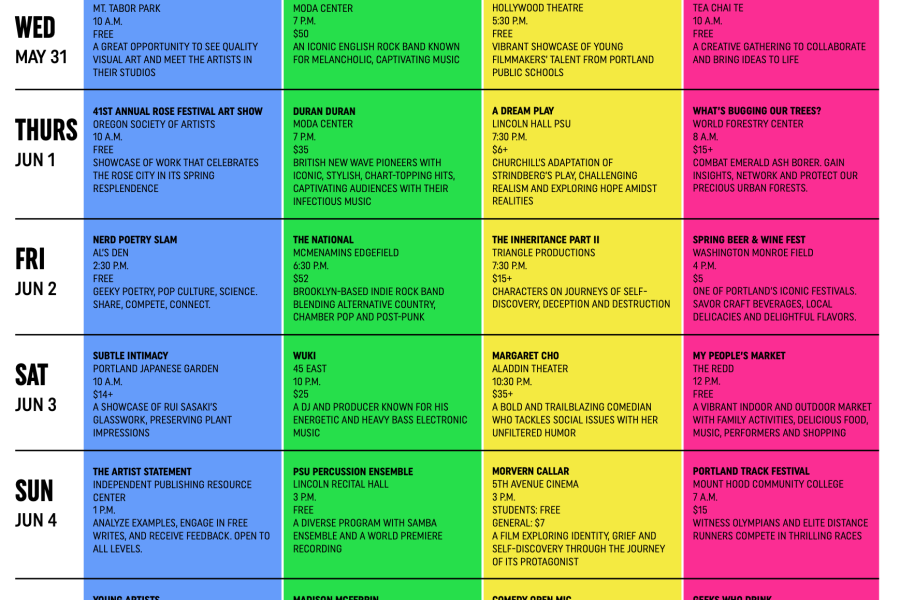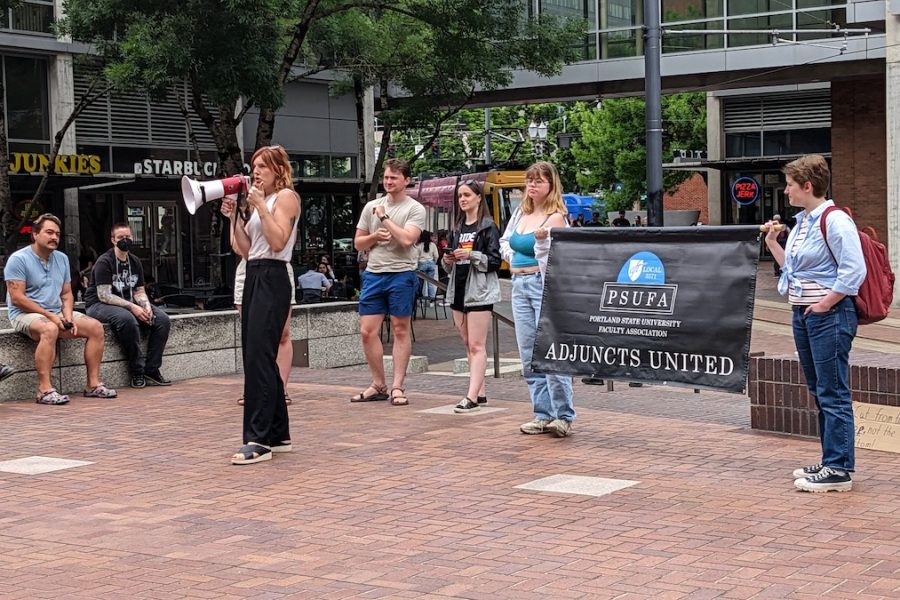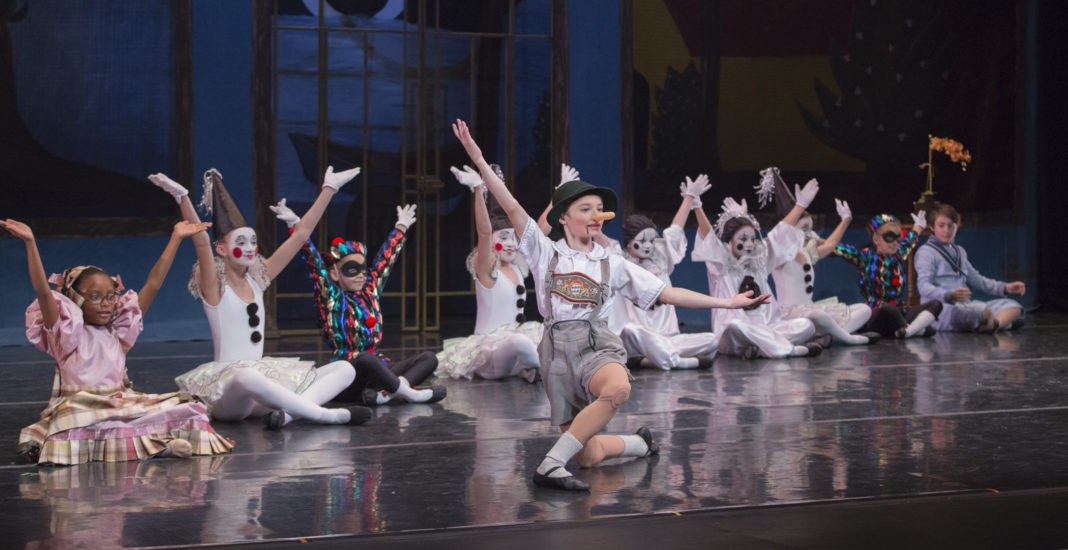Currently on exhibit at The Jordan Schnitzer Museum of Art (JSMA) at Portland State is the 2023 BFA/MFA showcase, At This Time—an exhibition featuring the diverse works of 31 students in PSU’s School of Art + Design.
This event is the culmination of the final projects for students in the MFA Contemporary Art Practice—Studio Practice and Art + Social Practice—and BFA Art Practice programs. The title of the showcase reveals the link between each students’ work—that their art is a product of their present practice, rooted in the here-and-now of their own experiences, perspectives and techniques.
Free of any thematic constraint, each collection delves into its own world of cultural motifs—spanning from occultism, gender expression, the commodification of creativity, self-love, BDSM culture and American football.
The exhibition’s range of style, aesthetic and medium proves equally diverse. It is a rare occasion to encounter acrylic, watercolor, ceramic, woven wool, video installation, illustration and comic-making all within a few steps of each other.
At This Time is a celebration of students’ creativity and diverse artistic work. Five BFA students granted us a deeper look into their work and inspiration for this exhibition.
Taya Thy Nguyen – Vietnamese Cuisine Palette
The starkly vivid color palettes of six perfectly square canvas paintings contrast against the eggshell wall they hang on. Each piece of this collection features an iconic Vietnamese culinary dish, after which the paintings are named. This includes Bánh Tét (savory sticky rice cakes), Mì Quảng (Turmeric Noodles), and Bánh Cam (fried sesame balls).
“As a Vietnamese artist, I want to share the culinary traditions of my homeland with the world, through my paintings,” Nguyen said. Nguyen explained that she would often photograph the dishes that she herself had prepared, and alongside photos from online, use these as references for her art.
Each dish tells a story—of seasons, of celebrations and of culture. The collection invokes an excitement for the potentiality of food as more than sustenance. Vietnamese Cuisine Palette is art that breeds art, from that which we take for granted as commonplace. “Creating this series was my way to capture my memories of Vietnam, and to share my feelings of homesickness with everyone,” Nguyen said.
Nadia Belov – All Together Now
Nadia Belov’s four-piece textile collection—featuring pink and orange ruffles, crocheted flowers and slippers reminiscent of the iconic Troll doll—will reignite the stifled whims of one’s inner child.
Despite the free-spirited nature of Belov’s textile collection, it is firmly rooted in opposition against the exploitative nature of textile capitalism. All Together Now is “a reaction to, and a rejection of the garment industry and how terrible it is,” Belov said.
Belov’s practice opposes the abuse of garment workers, and the general wastefulness that accompanies mainstream textile production. “Every single thing, even my sewing machine, was either gifted to me by my grandma, or found at the bins, or clothes that people gave me that they didn’t want,” they said. Belov mentioned upcycling a range of materials, from discarded curtains to scraps from Oregon Ballet Theatre’s costume shop.
All Together Now renounces the harm sustained by fashion institutions, while also proposing an alternative form of expression, celebration and authenticity. Belov describes the collection as “a hug to my younger self, like an, ‘I see you. I love you. Here’s a fairy dress that you probably wanted to wear when you were a little kid.’”
This collection decenters the male gaze, embraces hyperfemininity and demonstrates the freedom of dressing purely for oneself. Bevlov described the work as “an exploration of gender expression, queerness and just joy in general.”
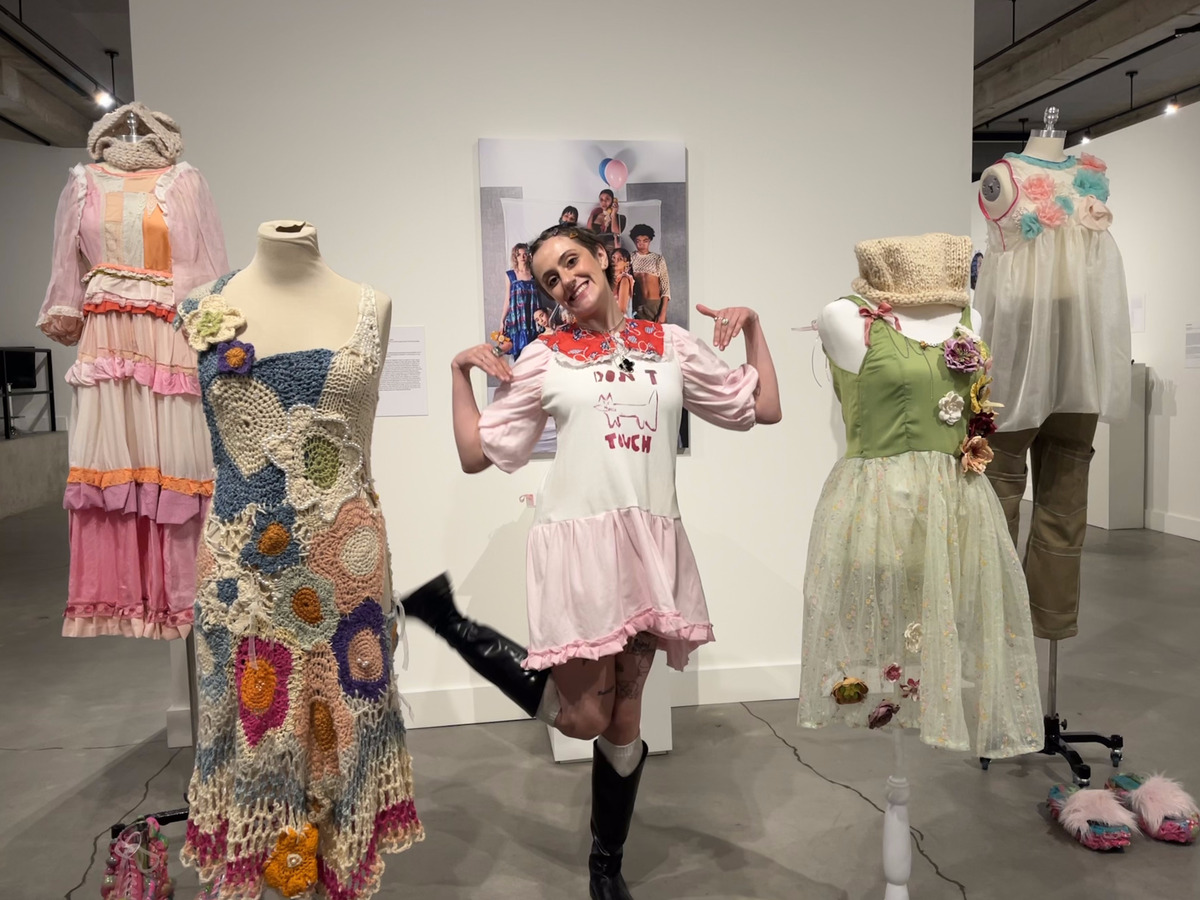
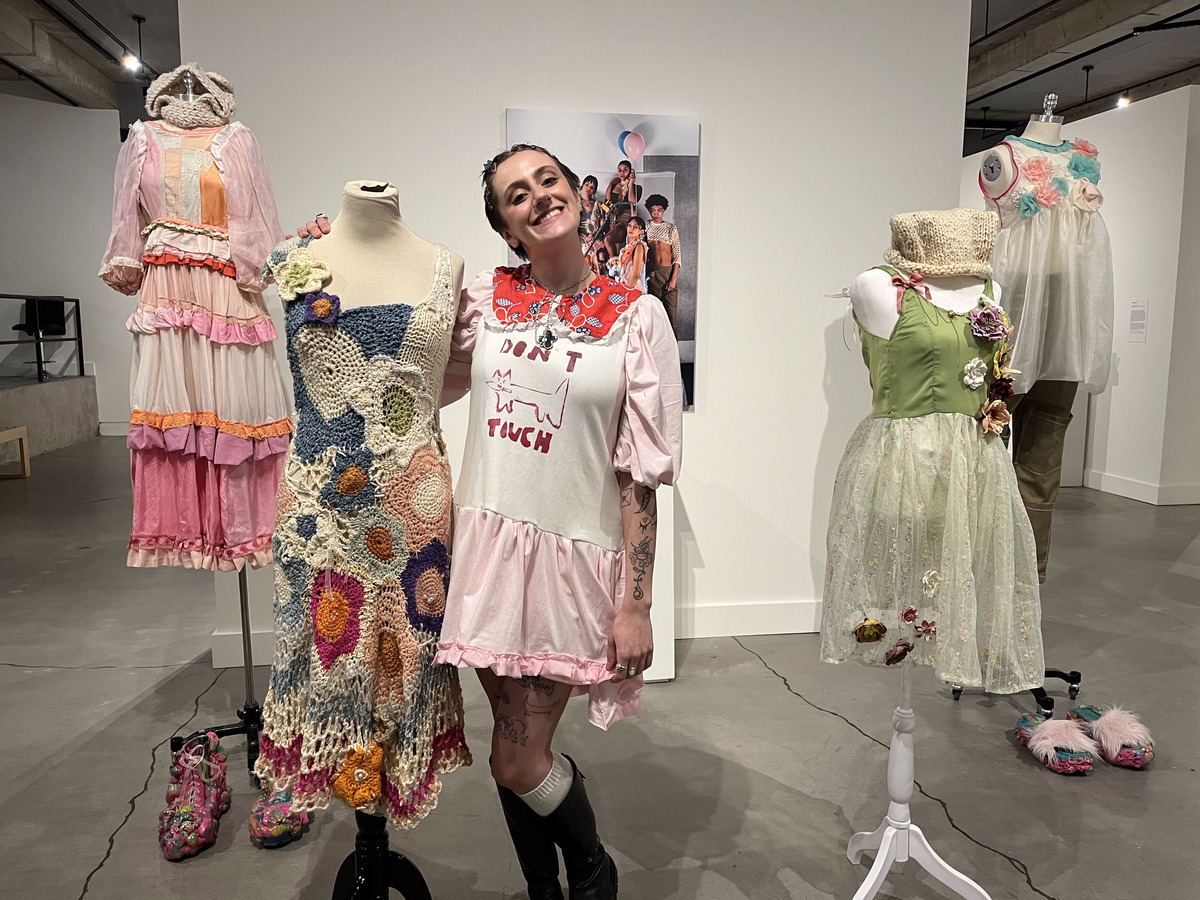
Georgia/George Bryant – Cool Things for Cool People
Georgia/George Bryant is another pioneering textile artist featured in this exhibition. Their garments and textiles are centered around fulfilling specific personal or accessibility needs.
This collection includes a computer bag with a particular contrastive pattern designed to increase visibility for people with color blindness or other visual impairments, a chest binder that unzips to release pressure and a grounding ball that crinkles and rattles for people who have dissociative disorders.
Additionally, Bryant created a “sensory cloak for people who can feel overstimulated,” as they explained. “The shoulders and hood are weighted so it gives that compression hug feeling, and the hood is weighted and really big so it can block out the environment if someone needs to block everything out and take a breather.”
Bryant personally designed, sustainably sourced and created each piece themself. Inspired by the needs of their own friends and family and developed by extensive community outreach and interviewing, their work caters to those that the mainstream textile industry so often overlooks.
“I saw from my own loved ones that there was this gap that the clothing industry was not filling, and I like to sew, and I really like to give gifts, so I wanted to fill that gap myself,” Bryant said.
Bryant currently accepts commission work on their website, to design garments by special request.
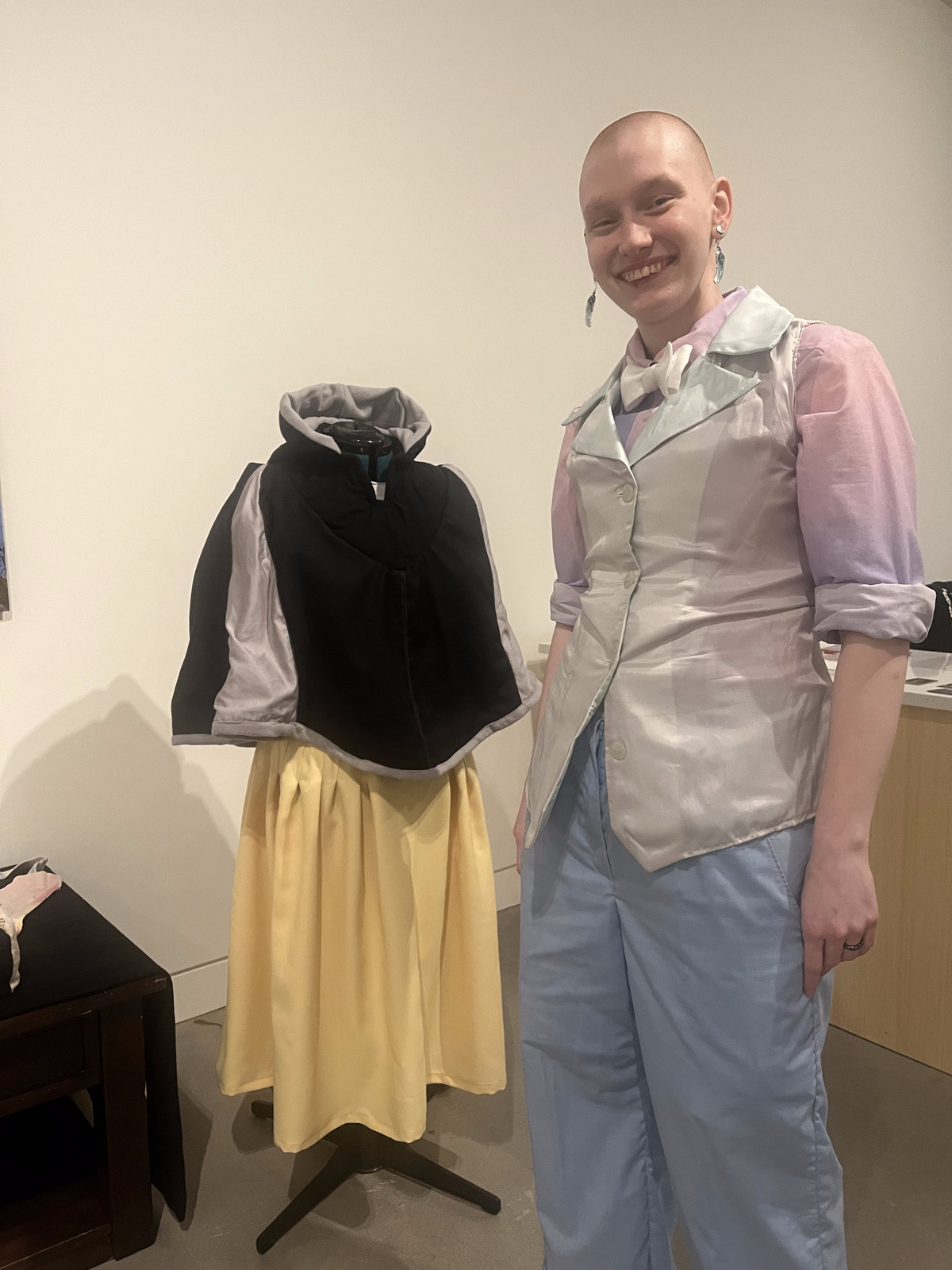
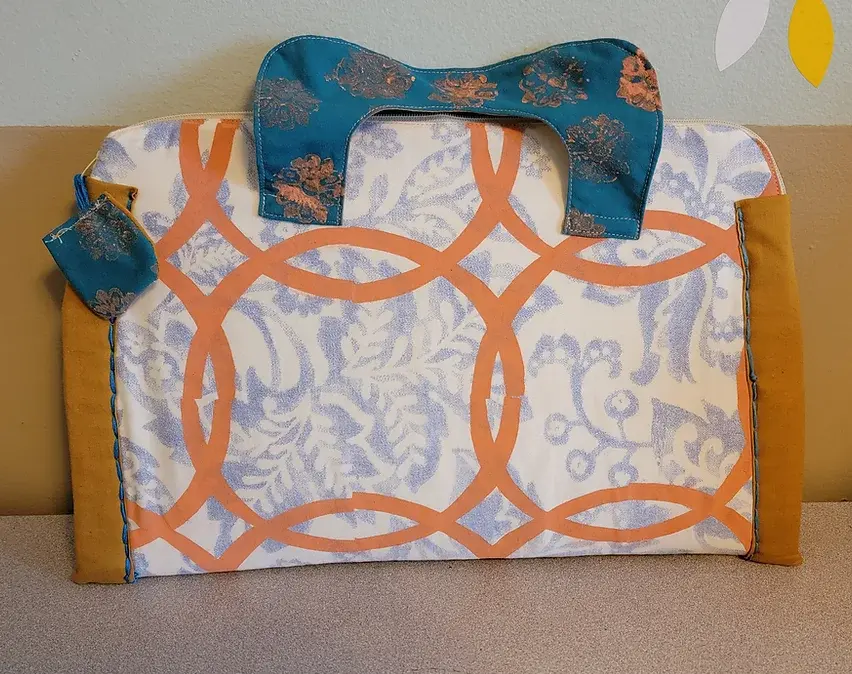
Schuyler Nefcy – Fractures: Complete Works
Illustrator, writer and comic designer Schuyler Nefcy showcases the intricate design process behind the production of their full-scale fantasy comic. This includes script-writing, storyboarding, character design, worldbuilding and watercolor illustration.
“I really love doing visual storytelling,” Nefcy said. “And I specifically wanted to do illustration stuff because illustrative work is not really accepted in galleries currently.”
Aside from the panels and the text, Nefcy illustrated the entirety of the comic using watercolor—including the line work. The work’s elaborate imagery is accompanied by meticulous clothing design spanning across various historical eras. Nefcy also expressed an interest in diversifying their characters’ gender expression.
The plot follows a young boy stuck in a reincarnation cycle, in a setting that works to invert a traditional religious narrative in the afterlife.Themes such as processing grief, the subjectivity of good and evil and the effects of an unwillingness to compromise are prominent in the work.
Nefcy explains that Fractures finds inspiration in walking through the gray area. It’s about “what happens when there’s not a vindictive villain,” they said. “There’s not a willful decisive villain, because in this case it’s a kid that doesn’t know what’s happening.”
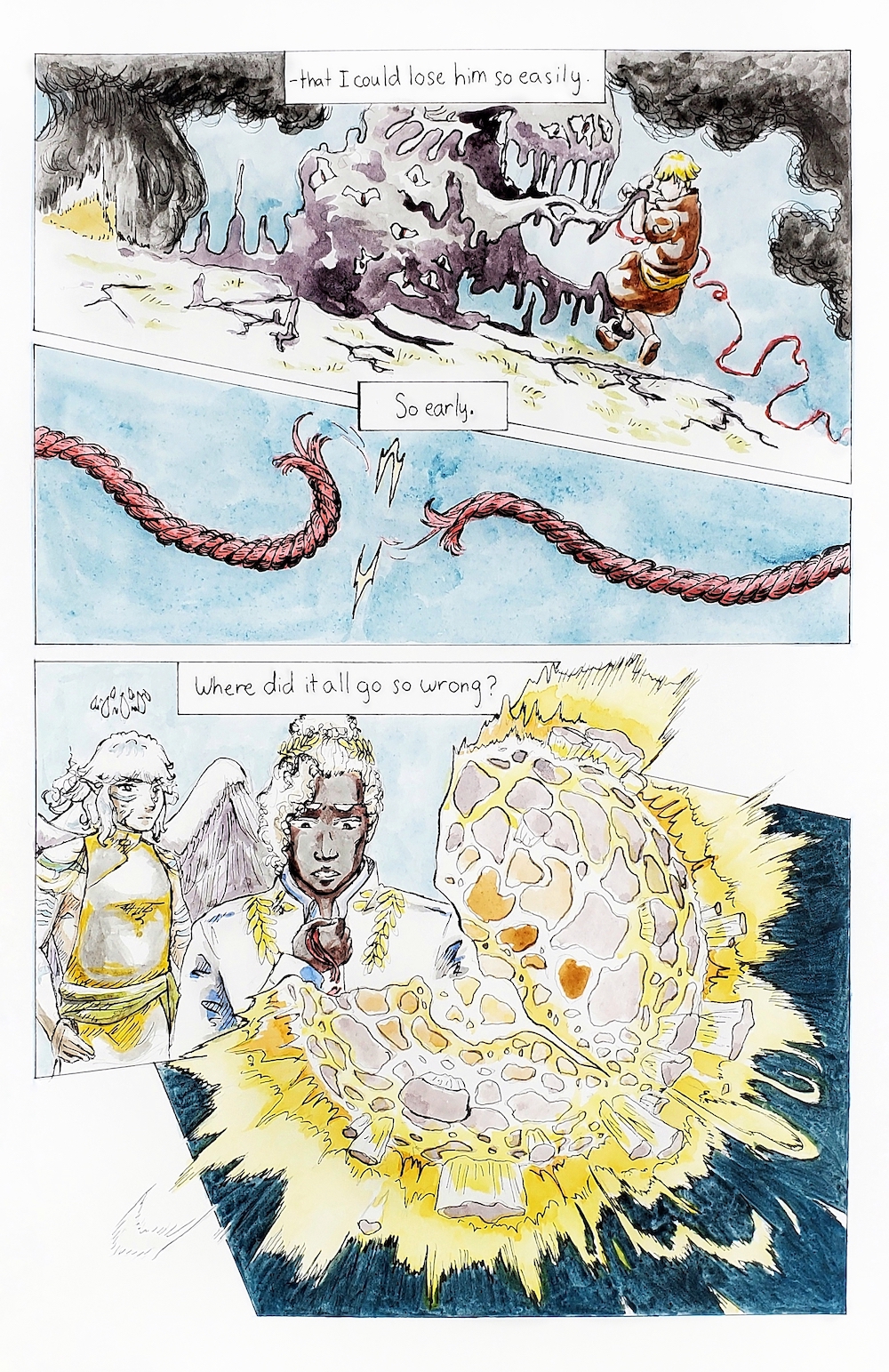
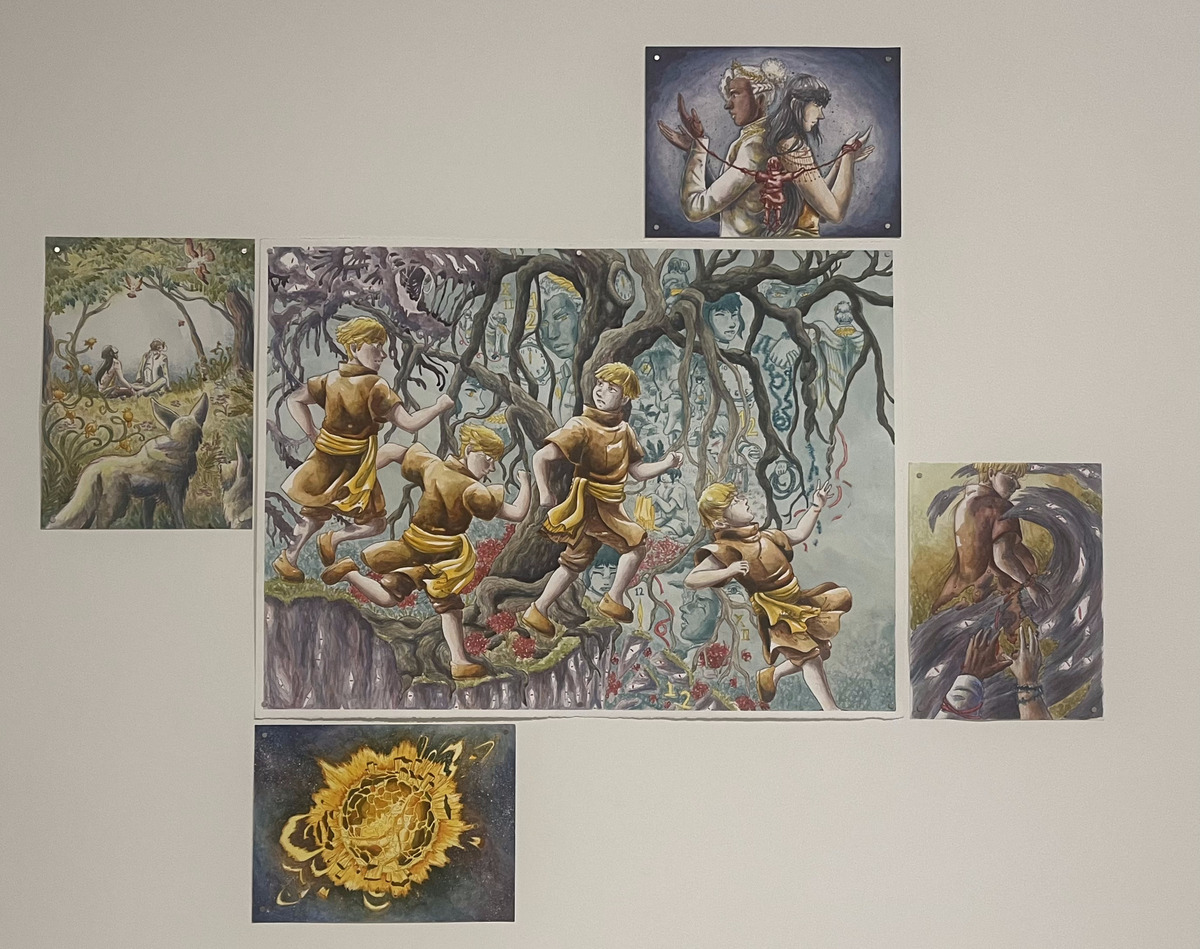
Alejandro D. Ponce – True Love: Part I
The key word of Alejandro D. Ponce’s 13-minute video installation is amatonormativity, a term coined by Elizabeth Brake, which Ponce defines as a belief system that claims: “everyone in the world is looking for the same thing in a relationship, and basically benefits from the same thing—that being a long-term, monogamous, role-centric relationship.”
True Love is a short, black-and-white arthouse film that rejects this assumption. It is “a revolt against the status quo of how we, in any kind of relationship, love each other,” Ponce said.
The plot revolves around Void, performed by Jeydon Griffiths, and her personal evolution in response to the constraining dynamics of a role-centric, heteronormative relationship. “I wanted to show at its core that this status quo… is inherently toxic,” Ponce said. “It does not work—even for the people it is meant to work for.”
Ponce’s directive choices feature abstract masks, conceptual camerawork and symbolic dance sequences in the nude, choreographed and executed by Griffiths. The first of these is filmed all in one shot, in a vacant PSU art studio.
“This film also uses a lot of aesthetics from BDSM culture,” Ponce said. “A lot of people look at BDSM and think it is simply sexual when in reality, the tenets of BDSM are very different from that.” Ponce explains that BDSM culture is grounded in consent, empathy and trust—the antithesis of amatonormativity.
This video installation is the first part in a series that will be four connected films. Each of these will “delve into different aspects of relationships and how people love,” Ponce said.
True Love: Part I functions to deconstruct the harmful systems perpetuated by a dominant patriarchal culture, and inspires viewers to relate the depicted themes to their own capacity for giving and receiving love. “Anyone could really look at it and think back on a past relationship, how they might have acted in a relationship, and be like ‘I can see myself in this film,’” Ponce said.
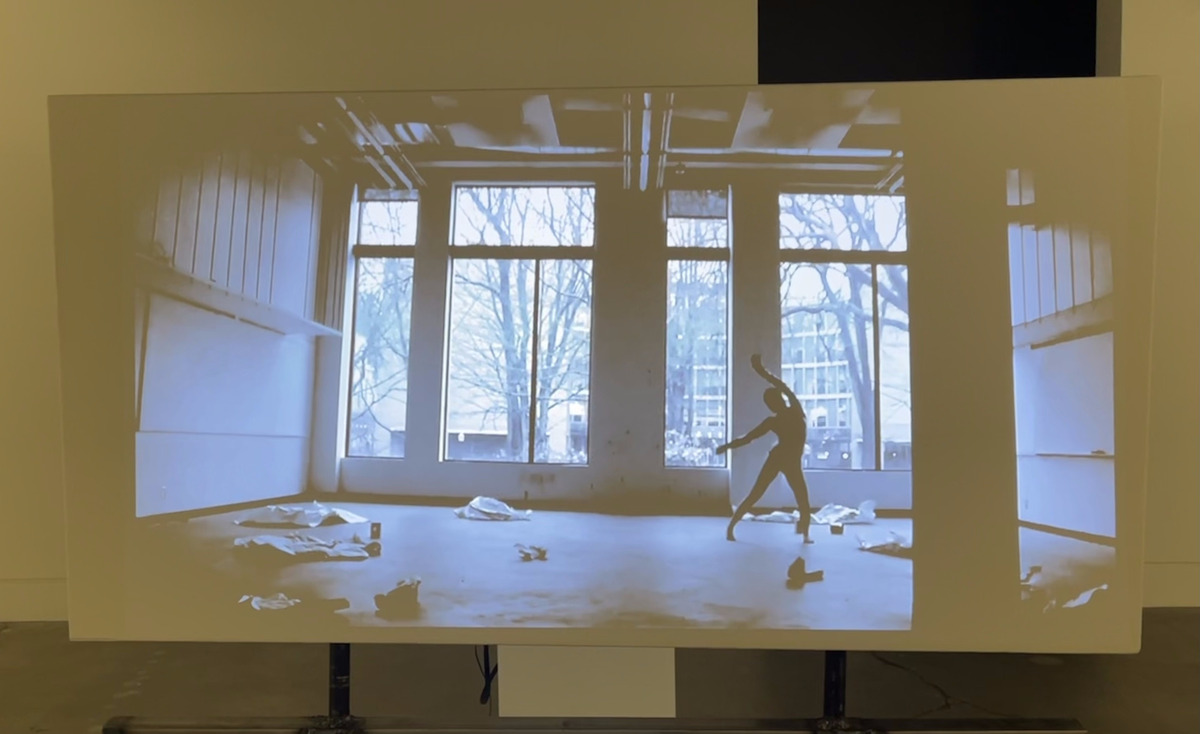
At This Time will be on view in JSMA until June 10. Entrance is free and open to the public.

